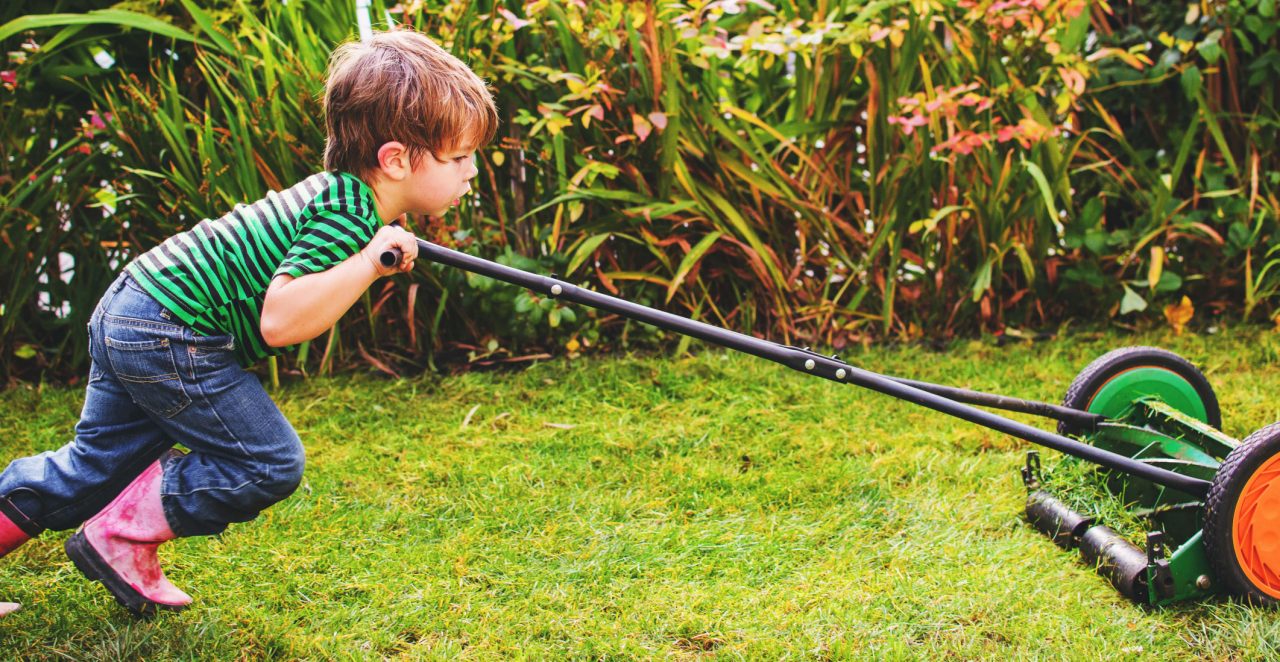How to Avoid Lawn Mower Injuries

Keep hands, feet, and children away from the sharp blades to avoid cuts and burns.
Every weekend, the same ritual plays out on millions of lawns across America. Homeowners push their mowers back and forth, taming overgrown, unruly grass into a perfectly trimmed green carpet. For most do-it-yourself landscapers, the lawn mowing routine goes off without a hitch. Yet each year, about 36,000 people end up in hospital emergency rooms with cuts, burns, broken bones, and severed fingers and toes they sustained while using a power mower, according to the U.S. Consumer Product Safety Commission.
“Most lawn mower injuries occur when the operator is distracted momentarily and injuries can range from finger tips to entire hands and feet,” says surgeon and past president of the American Society of Reconstructive Microsurgery, Michael Neumeister, MD.
Children and lawn mowers
Kids are especially vulnerable to injury from power motors, in part because they don’t understand the dangers. “The majority of lawn mower-related injuries are to the legs, feet, or toes,” said Charlene Graves, MD, medical director of the Injury Prevention Program at the Indiana State Department of Health. “When children come in contact with the rotating blades of the lawn mower, the resulting injuries often cause deep cuts to body tissues and bones, requiring many surgical operations.”
A study presented at the 2016 American Academy of Orthopaedic Surgeons meeting found that more than half of mower injuries in children led to an amputation. Many of the injuries happened when an adult who was using a mower didn’t realize a child was close by.
“There are still too many careless injuries that happen to children because of these powerful machines. Parents should take the time to discuss lawn mower safety precautions with their kids as most of these injuries can be prevented,” said John Tongue, MD, former president of the American Academy of Orthopedic Surgeons.
Safety tips
To protect everyone – adults and children – around power lawn motors, follow these safety tips:
Get familiar with your mower. Read the manual before you mow for the first time, so you know where all the safety features are, and how to use them. Also refer to your manual when performing regular service, or have the mower professionally serviced. Before the start of each mowing season, do a top-to-bottom inspection to make sure all parts are working properly. Also check that your mower is equipped with a safety mechanism that will immediately shut off the engine if you let go of the handle on a push mower, or leave the seat of a riding mower, while the engine is still running.
Wear the right gear. Put on closed-toed shoes – not sandals – along with a pair of protective plastic goggles to shield your eyes from rocks and other debris your mower might kick up at you. Also wear ear protection. A lawn mower can reach 100 decibels – about the same noise level as a jackhammer or a jet on take-off.
Check the lawn. Do a quick walk-through before you mow. Pick up large rocks, twigs, and other objects that might get caught up in the blade.
Turn off the mower. If something does jam the blade while you’re mowing, shut off the engine and wait until the blades stop turning completely before reaching inside to clear it out. Use a stick or broom handle to clear the jam – not your hands. Also wait until the mower is turned off before adjusting the blade settings, setting the wheel height, or refueling the mower.
Keep kids away. The safest place for children is indoors while you mow. Teach kids never to play on or around lawn equipment. Before you start mowing, look behind and around you to make sure no kids or pets are nearby. Never mow in reverse. If you absolutely need to go backwards, look behind you first. Don’t let kids operate a push mower until they’re at least 12 years old, and they’ve had proper instruction. Young people shouldn’t operate a riding mower until they turn 16.
Updated:
August 03, 2021
Reviewed By:
Janet O’Dell, RN